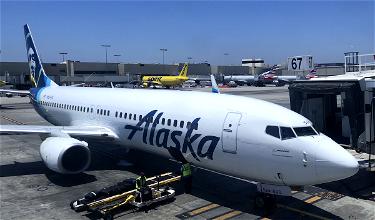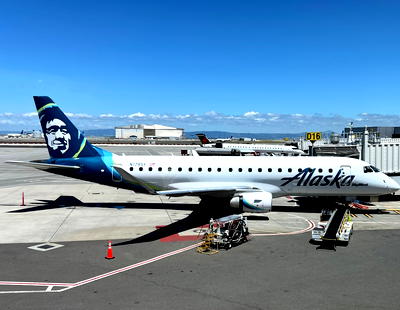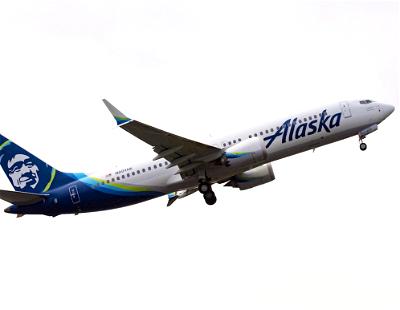Over the past few weeks some major US airlines have reported their first quarter results, including American Airlines, Delta Air Lines, Southwest Airlines, and United Airlines.
Alaska Airlines has become the latest US airline to announce first quarter earnings, and it’s not pretty, as you’d expect.
In this post:
Alaska Airlines reports $232 million loss
Alaska Airlines has announced a net loss of $232 million for the first quarter, compared to a profit of $4 million over the same period last year.
Excluding impairment charges, merger-related costs, and mark-to-market fuel hedge accounting adjustments, the airline reported a $102 million loss.
To compare that to the results of other airlines:
- American had a net loss of $2.2 billion, or $1.1 billion excluding special items
- Delta had a net loss of $534 million, or $326 million excluding special items
- Southwest had a net loss of $94 million loss, or $77 million excluding special items
- United had a net loss of $1.7 billion, or $630 million excluding special items
Other updates from Alaska Airlines
Alaska notes that the impact of COVID-19 on the business has been unprecedented. Demand deteriorated in February, and in March cancellations overwhelmed new bookings. Today demand remains over 90% below normal levels.
Alaska’s priority is to ensure the health and safety of guests and employees, preserve financial strength, and plan for the future. As a result, here are some of the action items the airline is taking:
- Alaska expects May capacity to be cut by at least 80%, and expects capacity cuts in June to be significant
- Right now Alaska has parked 156 mainline aircraft and 13 Horizon Air aircraft, and has also suspended flying of eight SkyWest aircraft
- As of March 31, 2020, Alaska held $2.1 billion in unrestricted cash and marketable securities
- As of May 4, 2020, Alaska holds $2.9 billion in cash and marketable securities, including CARES Act funds received in April
- Alaska has reduced cash burn from $400 million per month in March, to $260 million per month in April, with the goal of reaching $200 million per month by June
- Alaska has suspended over $500 million in capital spending, largely through the deferral of pre-delivery aircraft payments and non-aircraft capital projects
- Alaska believes they’re more agile than other airlines, based on the fact that they exclusively have narrow bodies and also have a higher percentage of leisure passengers than other airlines
- Alaska will be permanently parking a dozen aircraft, including 10 A319s and two A320s
Expect the second quarter to be much worse
If you think the first quarter results are bad, expect the second quarter to be much worse. The reality is that it’s only the tail end of the first quarter where demand really plummeted.
The first quarter ended on March 31, and data shows that passenger traffic in the US really only started decreasing materially as of early March (this is based on the number of travelers passing through TSA checkpoints):
- On March 1, passenger traffic was roughly comparable to last year (within 1%)
- On March 16, passenger traffic was less than half compared to the same day last year
- On March 26, passenger traffic was less than 10% compared to the same day last year
- On April 5, passenger traffic was less than 5% compared to the same day last year
It does look like traffic numbers bottomed out in early April and are ever-so-slowly recovering, though expect for it to be a really slow recovery.
Bottom line
Alaska Airlines is one of the most well run US airlines, but even so, the big loss was expected. At this point nothing is really surprising anymore…
While Alaska is doing what they can to reduce costs, the airline hasn’t announced any massive restructuring plans, unlike at other airlines. While airlines like United plan to shrink by about a third, there has been no such announcement from Alaska.
What do you make of Alaska’s first quarter results?





I think Alaska having a higher percentage of leisure passengers is a disadvantage, as I expect leisure travel to rebound slower than business travel, and also has smaller margins. But, it looks like for now they are safe from running out of cash, during 2020 at least.
Turned out that selling Virgin to Alaska was a very shrewd and well-timed piece of business for Branson.
If I remember correctly, AS was one of the first carriers to swing back to profit after 9/11. As a smaller carrier, it’s easier to make changes - the big behemoths don’t have the same flexibility. Shorter lines of communication, fewer layers of bureaucracy and employees being closer to the market all help. I’ve seen the same in other industries - GM, Ford and Caterpillar for instance. They are so large and disorganised with plenty...
If I remember correctly, AS was one of the first carriers to swing back to profit after 9/11. As a smaller carrier, it’s easier to make changes - the big behemoths don’t have the same flexibility. Shorter lines of communication, fewer layers of bureaucracy and employees being closer to the market all help. I’ve seen the same in other industries - GM, Ford and Caterpillar for instance. They are so large and disorganised with plenty of internal politics which leaves them more vulnerable when markets change despite their usually deeper pockets. Back when GM owned Saab, the latter was unable to get new models cleared by GM centrally, and as a result Saab was eventually shut down. If they had been allowed to act more independently I’m sure they would still be around.
@Bob
Read the post again.
"Alaska has reduced cash burn from $400 million per month in March, to $260 million per month in April, with the goal of reaching $200 million per month by June"
From all the quarterly numbers (per 8K not 10-Q), I would say the liquidity is stabilized (as in not much AS can do moving forward both raise or reduce).
I see that all US airlines are at risk...
@Bob
Read the post again.
"Alaska has reduced cash burn from $400 million per month in March, to $260 million per month in April, with the goal of reaching $200 million per month by June"
From all the quarterly numbers (per 8K not 10-Q), I would say the liquidity is stabilized (as in not much AS can do moving forward both raise or reduce).
I see that all US airlines are at risk but none are at the brink (weeks) of bankruptcy.
The most telling number for me now is actually future bookings. It could show how soon the market will recover. At current situation, some airline might not make it to 2021.
The most telling numbers right now are the cash burn figures... DL and AA appear to be around $70M a day while UA and WN are closer to $40-45M a day... not sure where AS is.
@ eponymous coward
Probably that's part of it. But Southwest may also be running a tighter ship. Delta did far better than United and American as well, granted Delta may have a lot less flights to Europe on their metal. There's no doubt SFO traffic probably cooled down a fair bit faster than other places, so United and Alaska could have been hammered by that. Those in Seattle could also have stopped traveling earlier.
Probably...
@ eponymous coward
Probably that's part of it. But Southwest may also be running a tighter ship. Delta did far better than United and American as well, granted Delta may have a lot less flights to Europe on their metal. There's no doubt SFO traffic probably cooled down a fair bit faster than other places, so United and Alaska could have been hammered by that. Those in Seattle could also have stopped traveling earlier.
Probably a variety of factors at play here to explain the discrepancies :) Maybe 2nd quarter results will be more revealing.
@ Daniel
Alaska is based on the West Coast. Washington, Oregon and California shut down earlier in March than a lot of the rest of the country.
I think it's a bad sign that Alaska's loss is so much bigger than Southwest. Southwest is very likely a bigger operation and they are both mostly domestic airlines.
Abey is correct in apples to apples, having said that AS is far and away a much better managed airline than AA/UA/DL with a solid loyal base of flyers. It will be interesting to see how not only Alaska but all the mainland carriers return to service, and routes they chose first. International travel is in the tank and will be for a long time, giving AS a better position hopefully.
Disclamer I am a AS MM and have been for sometime.
i think it would be useful when comparing losses to other carriers to also include market value and debt, as you cannot compare AS losses to UA DAL AA without considering its market size